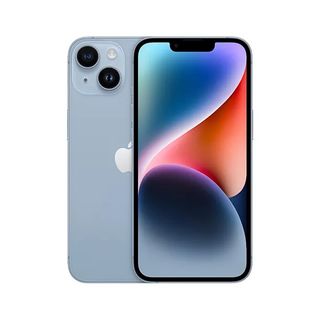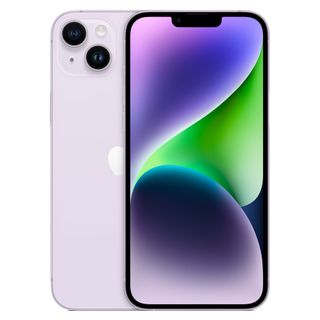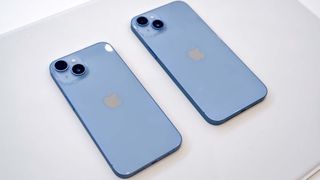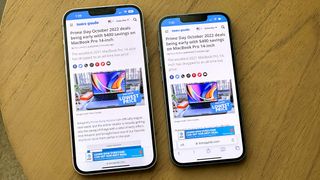The iPhone 14 and 14 Plus share a lot, but there are still some differences to know about


The standard iPhone 14 remains the best value option of the flagship iPhone range, while adding some upgrades like an enhanced chipset and photo/video improvements. But without a higher display refresh rate or optical zoom camera, it’s still lacking features its rivals have offered for years.
Also:A2850 Battery for Apple iPhone 14 Plus
For
- Excellent cameras
- Vibrant display
- Fast A15 Bionic performance
- Impressive Action mode video
Against
- Still just 60Hz refresh rate
- No optical zoom
- Lack of SIM card slot will annoy someWith a larger display and battery, the iPhone 14 Plus offers part of what makes the iPhone 14 Pro Max so good, but without the expensive pro-grade features. Unfortunately, that also means it falls behind equivalent Android phones at the same price, just like its baby sibling.
- iPhone 14 Plus
- For
- Big screen for a good priceLong battery lifeGreat cameras with Action mode videoStrong performance
- Lacks 120Hz display
- No telephoto lens
- Charging could be faster
- iPhone 14 vs iPhone 14 Plus:
- SpecsRow 0 – Cell 0 iPhone 14iPhone 14 PlusStarting price$699$799 Screen size 6.1 inches6.7 inches Refresh rate 60Hz60Hz CPU Apple A15 BionicApple A15 Bionic Storage 128GB, 256GB, 512GB128GB, 256GB, 512GB Cameras Dual 12MP (Wide, ultrawide)Dual 12MP (Wide, ultrawide) Size5.78 x 2.82 x 0.31 inches6.33 x 3.07 x 0.31 inches Weight 6.07 ounces7.16 ounces Colors Purple, blue, midnight, starlight, Product REDPurple, blue, midnight, starlight, Product RED
- iPhone 14 vs iPhone 14 Plus:
- Design and display
- Size is the biggest iPhone 14 vs iPhone 14 Plus difference: the iPhone 14 will have a 6.1-inch display, while the iPhone 14 Plus gets a larger 6.7-inch display. Accordingly, the iPhone 14 weighs just over 6 ounces, while the iPhone 14 Max tips the scales at a little over 7 ounces.
- But that aside, the phones don’t differ much physically, and both mirror the shape and proportions of the iPhone 13and iPhone 13 Pro Max that came before.
- The iPhone models get aluminum frames with glossy backs. And like with the previous gen iPhones, the iPhone 14 and 14 Max are IP68 water and dust resistant and have the Lightning port for charging (probably for the last time on iPhonesgoing by multiple iPhone 15 rumors).

- The iPhone 14 and iPhone 14 Plus stick with the same notch as the iPhone 13 series, which means it will very much be there but 25% smaller than theiPhone 12. The iPhone 14 Pro and Pro Max have gotten rid of the full notch and have a pill-shaped cut-out for Face ID and the front camera instead.
- In terms of display, the phones have skipped Pro Motion, which Apple has again reserved for the Pros. They instead have 60Hz, which is behind the times for mostAndroid phonesbut won’t be noticeable if you’re coming from any iPhone other than a 13 Pro or 13 Pro Max.

- They’re very similar in our display tests as well. Whether it’s color gamut, color accuracy or average brightness, the iPhone 14 and iPhone 14 Plus perform within a couple of percentage points of one another. The only difference was during our HDR brightness tests, during which the iPhone 14 Plus is noticeably brighter.Row 0 – Cell 0
- iPhone 14iPhone 14 PlusPeak brightness (nits)758764Peak HDR brightness (nits)7561,100DCI-P3 color gamut coverage (%)83.185.4Color accuracy (∆e, lower is better)0.250.25
- Both phones offer the same set of colors to pick from. The original options are Starlight, Midnight, blue, purple, and Product RED, while a new yellow option debuted in spring.
- iPhone 14 vs iPhone 14 Plus:
- CamerasThe iPhone 14 and iPhone 14 Plus share camera hardware. That includes two 12MP cameras on the back, serving main and ultrawide purposes, and another 12MP camera on the front for your selfie-taking needs. There’s no telephoto camera or 48MP main sensor though, as those are Pro exclusives.
- One new feature that you won’t find on previous iPhones is the Photonic Engine. This is Apple’s fancy name for a new image processing pipeline that focuses on getting better low-light shots.
- iPhone 14 vs iPhone 14 Plus:
- BatteryThis is where the difference between the two phones gets interesting. The iPhone 14 Plus lives up to its name and max out on the battery front, getting ahead of the iPhone 14.
- The average battery life for the iPhone 14 during our testing (using a custom test to continuously browse the internet over 5G) was 9 hours and 28 minutes. The iPhone 14 Plus lasted 11 hours and 57 minutes, an excellent result.
- As you might expect, the battery size gap between the two phones has an impact on charging speed. Using Apple’s 20W charger, the iPhone 14 charged to 54% in half an hour, and the iPhone 14 Plus charged to 46%.
- iPhone 14 vs iPhone 14 Plus: Bottom lineThere’s not a big gap between the iPhone 14 and iPhone 14 Plus — Apple saved that for between the iPhone 14 and iPhone 14 Pro. But there’s enough to make it worth considering carefully which phone you’re better off using.In a nutshell, the two phones differ in size, battery life and price. The iPhone 14 Plus arguably outshines the iPhone 14 overall by offering a big-screen iPhone experience for a more affordable price than the Pro Max. But since it doesn’t offer a lot more than the regular iPhone 14, maybe the smaller handset will still provide the best bang for your buck.
- iPhone 14 vs iPhone 14 Plus:
- Performance
- In our iPhone 14 benchmarks, the iPhone 14 and iPhone 14 Plus scored very similarly, as you’d expect from two phones with the same chip and RAM. The iPhone 14 Plus does seem to have an edge in some areas though, perhaps due to improved cooling thanks to its larger body.
- Apple also gave both phones the same new safety features – Crash Detection and satellite-powered Emergency SOS. Hopefully, you’ll never need to automatically notify someone you’ve been in a vehicle collision or have gotten lost somewhere in the wilderness, but either of these phones will help you with that.
- And what about storage space? Both phones offer the same there too, with capacities of 128GB, 256GB and 512GB.